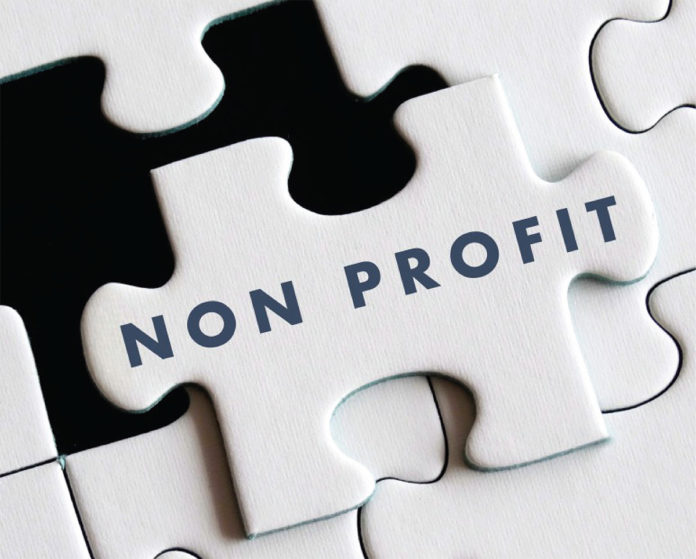The Vancouver Business Journal’s special edition on Philanthropy was scheduled to print on Aug. 28. However, due to COVID-19, we have not been producing any print editions of the VBJ. This contributed column was scheduled to run in the Philanthropy edition.
When the economy took a hit in March of 2020, so did many nonprofit organizations. In a blink of an eye, 1.6 million jobs in the nonprofit sector were obliterated and 4% of all paycheck protections loans were allocated to nonprofit organizations nationally, according to The NonProfit Times.

So, how do nonprofit organizations move forward in our new normal? In Giving USA’s 2019 report, overall giving had increased by 6.9% in all sectors, with arts, culture and environmental programs being at the forefront of the increased giving. However, 2020 has seen a shift in priorities to support food, shelter and healthcare, leaving other programs to heavily compete for grant requests. By refocusing efforts onto individual and corporate giving and thinking outside of the box, nonprofits can achieve pre-COVID-19 results in the underserved programs which include education, arts, humanities and culture.
What is known is that donors are still giving, and some even more so than they would usually give. According to the Community Foundation of Southwest Washington, in talking with their nonprofit partners, many local organizations found their individual donors to be more generous during COVID-19. Some nonprofit organizations felt disingenuous when asking for a gift amid the economic downturn, which led to more passive fundraising, creating an even more competitive grant seeking process than in prior years. The Society of Nonprofit Professionals reported that grantors have seen three to four times more grant requests in 2020, and in Clark County, the Community Foundation of Southwest Washington has seen a 134% increase in grant activity, both in requests and proactive donor grants, according to President Jennifer Rhoads.
The pandemic has shown that the community cares about the well-being of its people and nonprofit programs. Development staff checking in with donors, ensuring that they know that their organizations are still working toward their goals, is paramount in these times. Transparency is key. The community understands that everyone is facing difficult times, thus being open and direct with their donors as to where their greatest needs lie is invaluable. It is acceptable for nonprofits to be uncertain of how their programs will look in the future so long as they keep an open dialogue with donors. Strong nonprofit organizations are resilient, and donors understand that.
Prior to the pandemic, the future of philanthropy was moving toward utilizing more technology, however COVID-19 catapulted this move exponentially. People are becoming more accustomed to using video chat, livestream and texting technology to reach donors, and to move forward, nonprofit organizations must embrace these new technologies to meet donors where they are. The upside to this shift is that nonprofit organizations are reaching more donors, especially younger, more tech-savvy donors. Many nonprofit organizations have also seen success in shifting their annual fundraisers to a virtual format, which has been shown to also attract attendees who would not normally attend large, in-person fundraising events. But how would one know what technology should be utilized? According to Jill Muehrcke, founder and editor of Nonprofit World, Generation X, Millennial and Generation Z donors (donors born after 1965) tend to give through text-to-give and mobile devices and want to make sure that their donation will create a difference right now, therefore using online campaign platforms work great for younger donors. Baby boomers (born between 1946 and 1964) enjoy face-to-face cultivation and stewardship, therefore Zoom and other video chat platforms are the perfect way to have that face-to-face interaction while adhering to social distancing.
Although the pandemic caused businesses and organizations to pivot fast to meet the needs of a declining economy, it has also allowed nonprofits to take a step back and really assess what they do and how everything is intertwined. Slowing down gave some organizations the time to strengthen relations with their donors, staff and even community. These recent months have proved difficult for many nonprofits to navigate in a viable manner, inciteful program directors who directly speak to the needs of their programs through careful selection of their communication tools will continue to successfully support their much needed programs.
Jennifer Hawks-Conright is the development director for Columbia Springs, a non-profit environmental education center and nature area along the Old Evergreen Highway in Vancouver. She has worked in nonprofit development and international relations for more than 20 years and taught at both Central Washington University and Clark College. She can be reached at columbiasprings.development@gmail.com. To learn more about Columbia Springs, visit www.columbiasprings.org.




